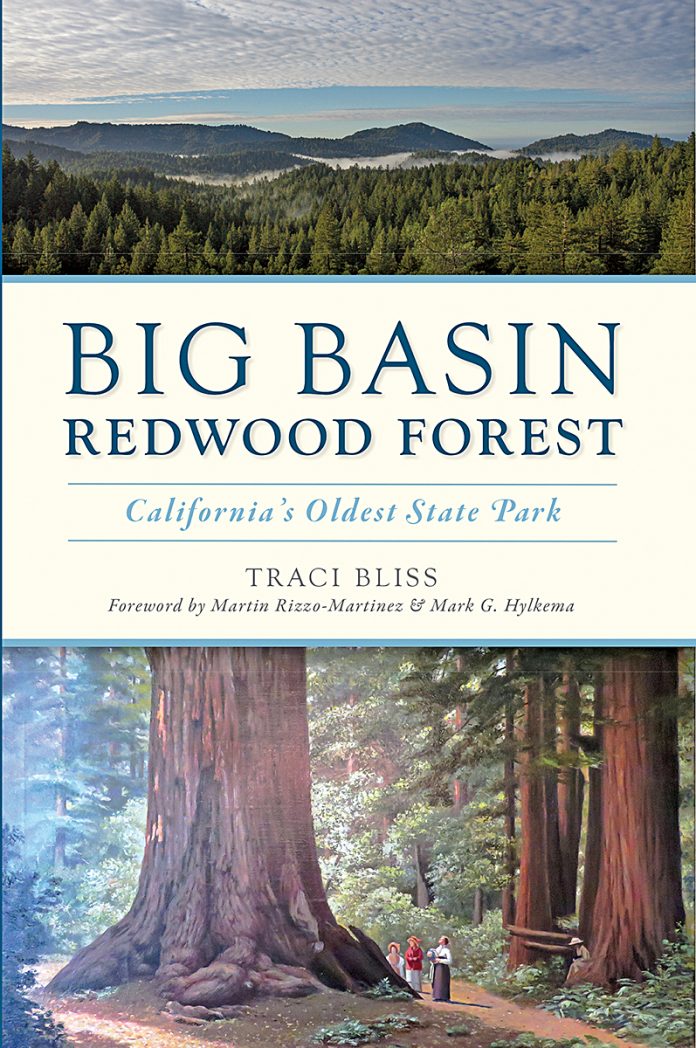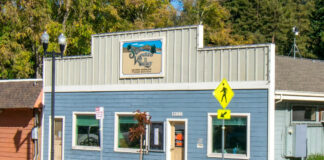Before the CZU August Lightning Complex fires decimated Big Basin Redwoods State Park, visitors who canvassed the trails and camped beneath the redwoods saw different things: towering trees; various and beautiful flora and fauna; abundant wildlife, babbling brooks and starry skies. But when Traci Bliss went to Big Basin, she saw history.
Bliss’ great-great-aunt, Jenny Bliss Jeeter, lived to be 100. As she neared the end of her life, Jeeter told her family the story of saving Big Basin and asked them to never forget how the redwoods were saved. Traci Bliss didn’t know what role Jeeter had played in that movement, and she couldn’t find any literature that outlined the efforts of women in that endeavor.
After 10 years of research and interviews, Bliss, a retired professor of education, is practicing what she preached to her students: You have to make history come alive.
Enter “Big Basin Redwood Forest: California’s Oldest State Park,” a book that focuses on the efforts of women in the early 1900s to preserve the trees at Big Basin, and tangentially at Henry Cowell State Park.
“In 2010, I became a docent at Henry Cowell, and began to research the topic of Big Basin’s preservation. As I dug deeper into the subject, the story got bigger and bigger and bigger,” Bliss said. “At that time, the old newspapers started to become available online, and I’ve been able to tell the story thanks to digital newspapers and other resources.”
The book outlines the story of women who were part of the San José Women’s Club (SJWC) in California. In 1896, women lost their attempt to get suffrage. That loss spurred a huge statewide network in support of suffrage, and the SJWC came together around the cause of preserving Big Basin. Several of the club’s members were exceptional journalists, and they played a big role in leading the movement in terms of public relations. The women called themselves preservationists and were concerned about the amount of logging that was destroying the Santa Cruz redwoods but had not yet encroached upon Big Basin. Even at that time, a professor at Stanford, William Dudley, had the data about how serious the logging had become. He noticed that increased logging resulted in less rainfall. Even though climate change was decades away, deforestation in the early 1900s was affecting rainfall and climate, Dudley said.
Eventually, the ownership of Big Basin was placed into the hands of Timothy Hopkins, the adopted son of one of the original owners of the Southern Pacific Railroad. Once Hopkins gained control of the land, and most of the redwoods in Santa Cruz County, he refused to log it or allow anyone on the land. He eventually created the Big Basin Lumber Company as an entity for the state to be able to buy the Big Basin land with a plan to preserve it.
Bliss is excited as she talks about the various entities that worked together to protect the forest.
“The advocacy groups were so well organized and mobilized, and had all these different skills—women were doing PR; there was a photographer capturing pictures, and the Santa Cruz Board of Trade, which eventually became the Chamber of Commerce, would take excursions into Big Basin by buggy to educate key influencers about what makes this land so special,” she said. “Members of Sempervirens and Sierra Club advocated for preservation, joining forces with the Native Daughters of Golden West who put pressure on legislatures, and in 1902, Big Basin State Park was created.”
The park opened in 1904, and almost immediately, there was a fire in Big Basin, spurred by lightning. The park survived because lumbermen and volunteer undergrads went to fight the fire. Despite a huge lack of resources from the state, those volunteers saved the park.
Bliss says she’s buoyed by this remarkable story of peoples’ resilient commitment to the common good, unselfishness and refusal to give up.
“These individuals have inspired me in so many ways. They had no playbook; in fact, no one in the United States had ever done this before,” she said. “Their sheer determination, unselfishness, and commitment is so inspiring. It’s truly a privilege to write about them.”
The book also includes 32 before and after photos of the toll that the CZU Complex took on the park.
“Big Basin Redwood Forest: California’s Oldest State Park” drops on Sept. 6.










